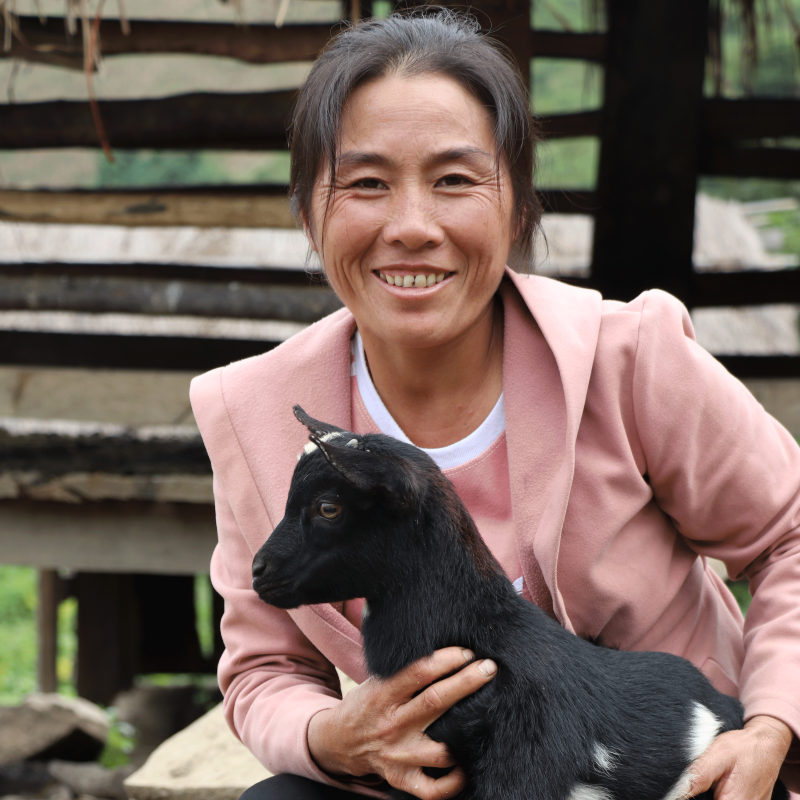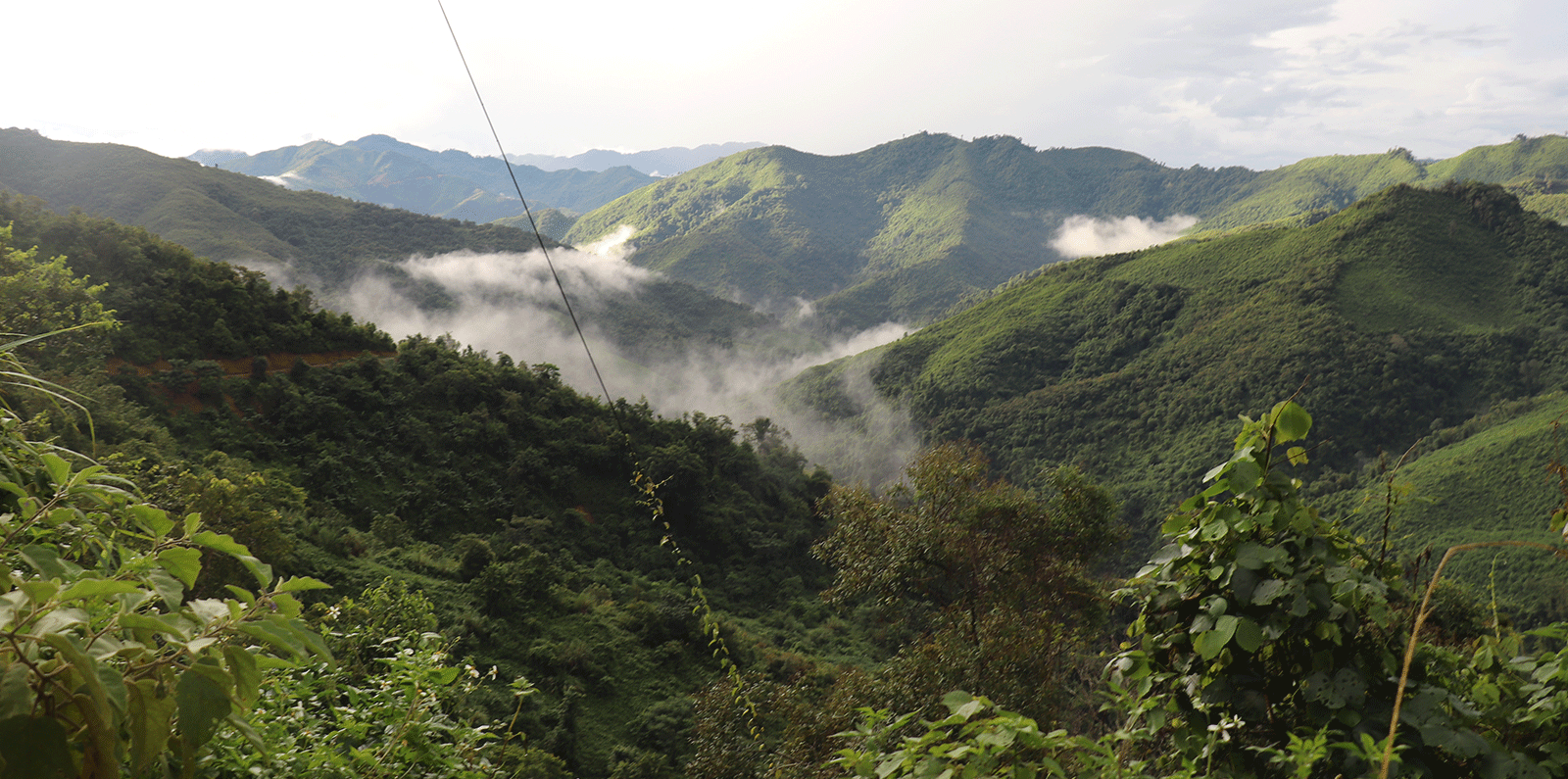Mo Ya, a 35 year-old mother of four from the Hmong ethnic community in northern Lao People's Democratic Republic (PDR), had to move to a new village after getting married. For as long as she could remember, she had raised goats for a living. But in her new surroundings in the mountainous Xieng Khouang province, she could not find goats to raise and cattle-raising was much more popular. With little understanding of cattle-raising and few learning opportunities, she knew she would have to rethink income options and adapt to her new surroundings.
Then, in 2017, Mo Ya heard about the Agriculture for Nutrition Programme (AFN), a $38.8 million GAFSP-funded project supported by IFAD and WFP, and implemented with the Government of Laos, namely the Ministry of Agriculture and Forestry. The project reached 400 villages in 12 districts across Lao PDR, with the aim of improving climate-resilient agriculture, household nutrition, and income-generating opportunities.
Mo Ya joined a goat-raising group training to learn new skills, including how smaller livestock, such as goats, can provide more sustainable livelihoods and incur less risk than larger livestock. Through the project, her group won a US$5,000 grant, which they divided among 13 members to give each household around US$400. Mo Ya invested the money in four big goats, metal roofing for a pen, and some vaccines. Today, she has a flock of 30 goats, and has earned more than US$1,000, re-investing her income into school fees, a new goat enclosure, and also building household savings for emergencies.

Rising poverty and emergency response
Even before the COVID-19 global pandemic, 9.4% of Lao PDR’s population faced severe food insecurity, especially in the northern provinces where AFN is active. The food system in Laos was already under strain, with the pandemic further exposing its fragile nature, disrupting production, trade, jobs and incomes. The agriculture sector in Lao PDR was particularly badly hit, since farmers already faced below-normal rainfall, falling fruit and vegetable production, and rising unemployment. The World Bank estimates that due to the impacts of COVID-19, poverty in Lao PDR is estimated to increase by up to 3.1 percentage points in 2020, pushing many people back into poverty.
To respond to the immediate crisis response, the project supported by GAFSP concentrated efforts to support the most vulnerable groups, distributing rice and cash, and providing small grants to women to grow foods high in nutrition; to develop vegetable gardens, and to make fishponds. Meanwhile, AFN worked with the government to declare food production and marketing as essential services – which ensured that food supply chains could continue to function during the crisis. Together with WFP, 400 farmer nutrition schools were implemented in all project villages, aimed at pregnant and nursing women and mothers with children under five years of age. These gatherings in villages, focused on providing basic information on nutrition, diet diversity, menu planning, cooking sessions, basic hygiene and lessons for families on agricultural practices.
Looking ahead
The project had already built strong infrastructure and networks before the pandemic, and farmers were able to rely on this continued support during the crisis. Many farmers like Mo Ya had received US$120 in Garden Grants, matched with trainings so that they could invest in seeds, material for simple greenhouses, or livestock like goats, chickens, ducks, frogs or fish fingerlings. Home gardens and household livestock activities were an essential source of nutritious food and household income during the COVID-19 lockdown.
Kaushik Barua, IFAD Country Director for Cambodia and Lao PDR, said: “In many rural communities in Laos, smallholders produce most of the food that the rest of the country consume. But unfortunately, smallholder producers do not often make sustainable incomes nor do they enjoy well-rounded diets. In this context, I think the AFN project really stands out. We have seen clear results captured in the rigorous impact surveys we conduct regularly.
“Households below the poverty line have dropped from over 70% to below 50% and families are consuming healthier and more diverse diets. I believe there is great scope to replicate this model: with close and productive collaboration between IFAD and WFP, with IFAD focusing on agricultural and livestock production; WFP focusing on nutrition-related training and behavior change, and both implementing participatory planning in rural communities.”
Households below the poverty line have dropped from over 70% to below 50% and families are consuming healthier and more diverse diets.
By December 2020, the project had reached almost 200,000 people, 73% of them women. Specifically, it has benefited 24,000 women with improved nutrition services, agricultural materials, and information. Improved infrastructure, including a rural road and drinking water schemes, continue to benefit the surrounding community. On average, household sales from agriculture doubled from US$280 per annum to above US$600, with 88% of farmers adopting at least one new nutrition or agriculture-related development on their farm.
Ahead of the UN Food Systems Summit, it is clear that while food systems urgently need to be transformed to better support both human and planetary health, transformed food systems must also be resilient to future shocks. The GAFSP continues to work with vulnerable communities and smallholder farmers like Mo Ya, to safeguard their capacity to withstand the impact of external shocks.
I now earn money and contribute to my household income and pay for certain things.
In the future, Mo Ya’s vision is to expand her farm and raise more goats, as the popularity of goat meat is rising steadily in her village and among the traders. “I would like to thank AFN for helping me raise goats once again. This time, it has proven to be much more beneficial than my past practices. I now earn money and contribute to my household income and pay for certain things. In a way, this has also helped me develop a stronger relationship with my husband.”
